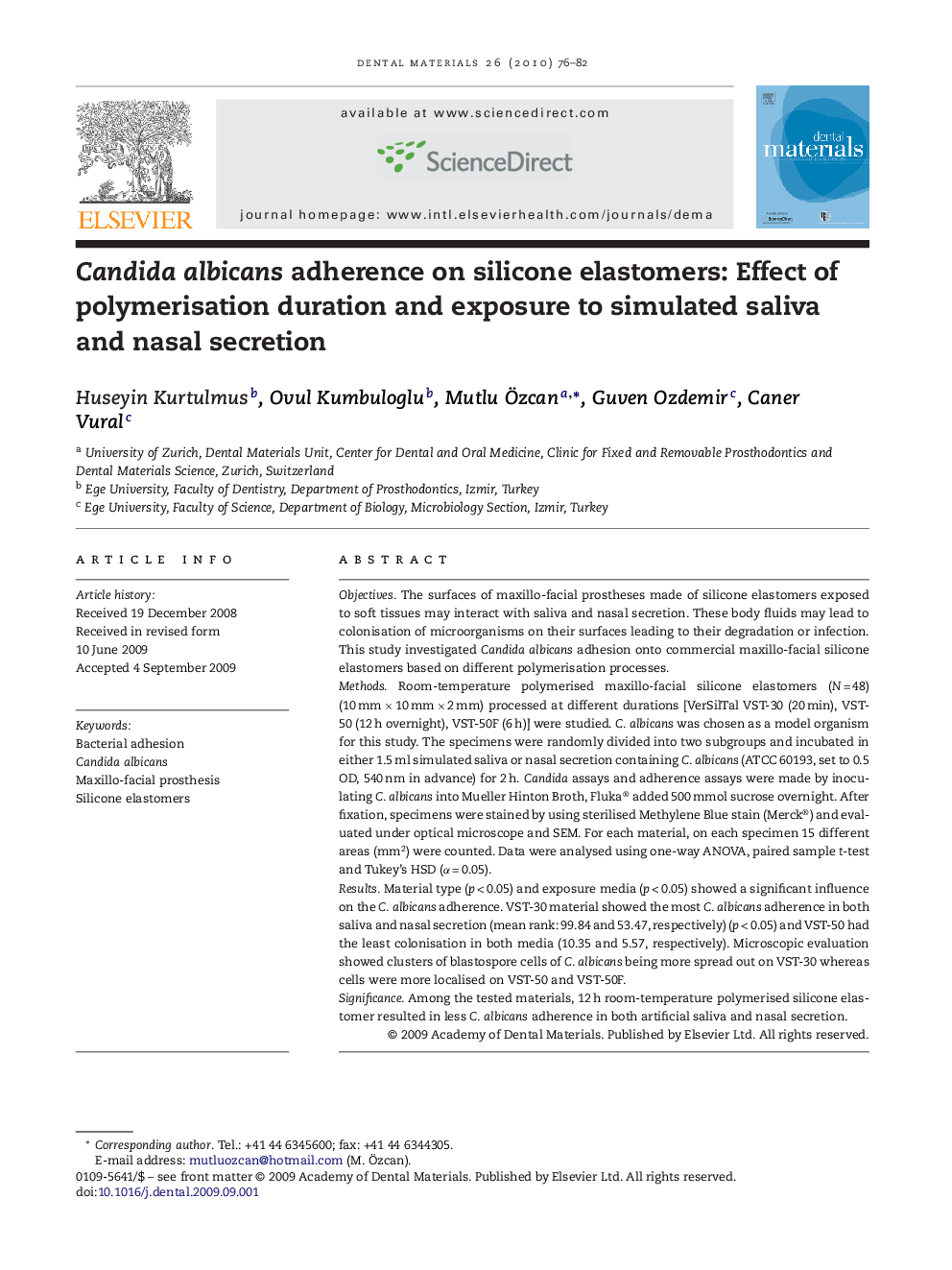| کد مقاله | کد نشریه | سال انتشار | مقاله انگلیسی | نسخه تمام متن |
|---|---|---|---|---|
| 1422380 | 986445 | 2010 | 7 صفحه PDF | دانلود رایگان |

ObjectivesThe surfaces of maxillo-facial prostheses made of silicone elastomers exposed to soft tissues may interact with saliva and nasal secretion. These body fluids may lead to colonisation of microorganisms on their surfaces leading to their degradation or infection. This study investigated Candida albicans adhesion onto commercial maxillo-facial silicone elastomers based on different polymerisation processes.MethodsRoom-temperature polymerised maxillo-facial silicone elastomers (N = 48) (10 mm × 10 mm × 2 mm) processed at different durations [VerSilTal VST-30 (20 min), VST-50 (12 h overnight), VST-50F (6 h)] were studied. C. albicans was chosen as a model organism for this study. The specimens were randomly divided into two subgroups and incubated in either 1.5 ml simulated saliva or nasal secretion containing C. albicans (ATCC 60193, set to 0.5 OD, 540 nm in advance) for 2 h. Candida assays and adherence assays were made by inoculating C. albicans into Mueller Hinton Broth, Fluka® added 500 mmol sucrose overnight. After fixation, specimens were stained by using sterilised Methylene Blue stain (Merck®) and evaluated under optical microscope and SEM. For each material, on each specimen 15 different areas (mm2) were counted. Data were analysed using one-way ANOVA, paired sample t-test and Tukey's HSD (α = 0.05).ResultsMaterial type (p < 0.05) and exposure media (p < 0.05) showed a significant influence on the C. albicans adherence. VST-30 material showed the most C. albicans adherence in both saliva and nasal secretion (mean rank: 99.84 and 53.47, respectively) (p < 0.05) and VST-50 had the least colonisation in both media (10.35 and 5.57, respectively). Microscopic evaluation showed clusters of blastospore cells of C. albicans being more spread out on VST-30 whereas cells were more localised on VST-50 and VST-50F.SignificanceAmong the tested materials, 12 h room-temperature polymerised silicone elastomer resulted in less C. albicans adherence in both artificial saliva and nasal secretion.
Journal: Dental Materials - Volume 26, Issue 1, January 2010, Pages 76–82